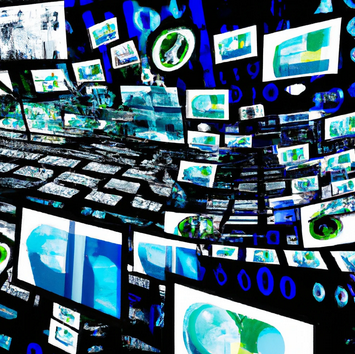Futuristic user interfaces (UI) are likely to be more immersive, adaptive, and intuitive than current UI designs. As technology advances, we can expect the following possibilities for futuristic UI:
Holographic Displays: Holographic UI will provide users with an immersive 3D experience, projecting information and controls into the air, allowing for interaction with minimal physical touch.
Augmented Reality (AR) Interfaces: AR UI will overlay digital information onto the physical world, making it possible to interact with digital content seamlessly within the user’s environment.
Brain-Computer Interfaces (BCI): Direct connections between the human brain and computers will enable users to control devices and navigate UI using only their thoughts.
Adaptive UI: AI-powered UI will be able to analyze user behavior, preferences, and context to deliver personalized and context-aware experiences, adjusting elements such as layout, color, and content dynamically.
Voice-Activated UI: Natural language processing and AI advancements will lead to more sophisticated voice-activated UI, allowing for seamless hands-free control of devices.
Gesture-Based UI: Advanced motion-tracking technologies will enable users to control UI elements using intuitive hand gestures, providing a more natural interaction experience.
Wearable UI: UI will be integrated into wearable devices, such as smart glasses, smartwatches, and clothing, providing always-accessible interfaces for controlling devices and accessing information.
Tactile Feedback: UI will incorporate haptic feedback, providing users with a more immersive experience by simulating textures, vibrations, and other physical sensations.
Biometric Authentication: UI will incorporate advanced biometric authentication methods, such as facial recognition, fingerprint scanning, and even heartbeat analysis, for secure and seamless access to devices and systems.
Emotional Recognition: AI-powered emotion recognition technology will allow UI to detect user emotions and adjust the interface accordingly, providing a more empathetic and personalized experience.
As technology continues to evolve, we can expect these futuristic UI concepts to blend and integrate, creating even more immersive and intuitive interfaces that cater to users’ individual needs and preferences.

